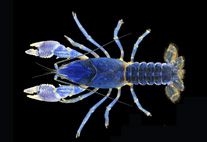Abstract
Description, illustrations and habitat characteristics are given for the previously unknown larvae and pupae of Nearctic species Hexatoma (Eriocera) californica, H. (E.) fuliginosa and East Palaearctic species H. (E.) sachalinensis, H. (E.) stackelbergi, H. (E.) ussuriensis and H. (s.str.) nubeculosa. Hexatoma (E.) sachalinensis, H. (E.) stackelbergi, and H. (s.str.) nubeculosa are reported new for Mongolia based on larval and reared adult collections. There are no distinguishing morphological characters to separate last instar larvae of the subgenera H. (Eriocera) and H. (Hexatoma), while pupae of these subgenera can be separated by the size and shape of the spines on the terminal segments. This study indicates that microscopic setae on the last abdominal segment, length of maxillary palpi, sclerotization of the spiracular field, length of spiracular lobes, length of setae on the apical part of the ventral lobes, the shape of the labrum and the arrangement of sensory structures on the labrum are the main larval characters to distinguish among species in this genus. The shape and length of the respiratory horns, size and number of the horns of the cephalic crest, length of the antennal sheaths, the lengths of the sheaths of the legs, size and shape of tubercles on the antennal scape are the main distinguishing pupal characters for the species of this genus. Nearly all known species of Hexatoma develop in sand or gravel in bottom of large and medium size rivers, smaller streams and creeks while last instar larvae and pupae can be found in the riparian zone, usually in gravel, sand or under stones.

